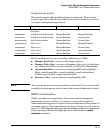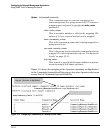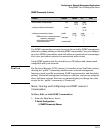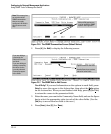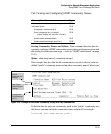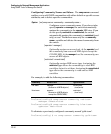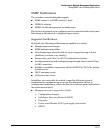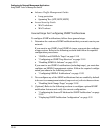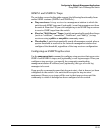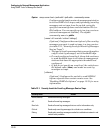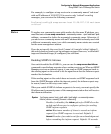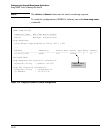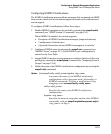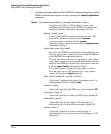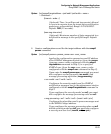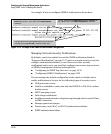
Configuring for Network Management Applications
Using SNMP Tools To Manage the Switch
SNMPv1 and SNMPv2c Traps
The switches covered in this guide support the following functionality from
earlier SNMP versions (SNMPv1 and SNMPv2c):
■ Trap receivers: A trap receiver is a management station to which the
switch sends SNMP traps and (optionally) event log messages sent from
the switch. From the CLI you can configure up to ten SNMP trap receivers
to receive SNMP traps from the switch.
■ Fixed or “Well-Known” Traps: A switch automatically sends fixed traps
(such as “coldStart”, “warmStart”, “linkDown”, and “linkUp”) to trap
receivers using a public or non-public community name.
■ Thresholds: A switch automatically sends all messages created when a
system threshold is reached to the network management station that
configured the threshold, regardless of the trap receiver configuration.
Configuring an SNMP Trap Receiver
Use the snmp-server host command to configure a trap receiver that can receive
SNMPv1 and SNMPv2c traps, and (optionally) event log messages. When you
configure a trap receiver, you specify its community membership,
management station IP address, and (optionally) the type of event log
messages to be sent.
If you specify a community name that does not exist—that is, has not yet been
configured on the switch—the switch still accepts the trap receiver
assignment. However, no traps will be sent to that trap receiver until the
community to which it belongs has been configured on the switch.
13-19



